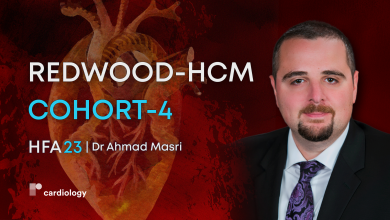Search results
Exercise Training in HFpEF
Author(s):
Hidekatsu Fukuta
Added:
3 years ago
Article
Author(s):
Wesley J Tucker
,
Michael D Nelson
,
Rhys I Beaudry
,
et al
Added:
3 years ago
Heart failure (HF) is a major healthcare problem associated with high rates of morbidity and mortality.1 Approximately 6 million Americans aged ≥20 years have HF, and it is the leading cause of hospitalisation among older adults with estimated healthcare costs of US$31 billion annually.1,2 HF with preserved ejection fraction (HFpEF) accounts for over 50 % of all HF cases, and unlike HF with…
View more
Giselle Melendez
Research Area(s) / Expertise:
Job title: Assistant Professor
Author
Author(s):
Justien Cornelis
,
Jonathan Myers
,
Hein Heidbuchel
,
et al
Added:
3 years ago
A hallmark symptom of chronic heart failure (CHF) is exercise intolerance associated with early fatigue and/or dyspnoea with a minimal degree of exertion. It is also associated with a decline in capacity to perform activities of daily living and a diminished quality of life (QoL). Both patients with heart failure with reduced left ventricular ejection fraction (HFrEF) and those with heart failure…
View more
Author(s):
Cristiana Vitale
,
Ilaria Spoletini
,
Giuseppe Rosano
Added:
3 years ago
Exercise intolerance is a typical symptom of heart failure (HF), impairing patients’ ability to perform activities of daily living and affecting quality of life (QOL).1 Chronic HF is characterised by a progressive reduction in exercise capacity, increasing fatigue and shortness of breath.2 In addition, exercise intolerance is often accompanied by increased blood pressure and chronotropic…
View more
Author(s):
Josep Comin-Colet
Added:
9 years ago
Author(s):
Erik H Van Iterson
Added:
3 years ago
The maximal exercise oxygen uptake (VO2 max) response physiologically reflects the clinical status of patients with low-output left heart failure (HF). The failure of VO2 max to rise above 12 ml/kg/min is a hallmark of deteriorated clinical status, impaired oxidative metabolic capacity and indicates advanced medical therapy is required to prolong life.1,2 The continuous-flow left ventricular…
View more
Author(s):
Ahmad Masri
Added:
11 months ago
ESC-HFA 23 — We are joined by Dr Ahmad Masri (Oregon Health & Science University Medical Group, US) to discuss the findings from REDWOOD-HCM cohort 4 (NCT04219826).
This study assessed the safety and tolerability of the selective inhibitor of cardiac myosin, aficamten (Cytokinetics) in patients with symptomatic nHCM. Cohort 4 included 41 patients. The data presented at HFA 23 shows that…
View more
Author(s):
Jacqueline H Morris
,
Leway Chen
Added:
3 years ago
Congestive heart failure (CHF) is a progressive cardiovascular disease with significant morbidity and mortality that affects an increasing amount of people worldwide. There are approximately 6.5 million people in the US, more than 14 million people in Europe, and 26 million people worldwide who are living with heart failure, and the prevalence continues to grow.1–3 In the US alone, there were 960…
View more
New Insights on HFpEF Treatment
Author(s):
Giulio Balestrieri
,
Raul Limonta
,
Enrico Ponti
,
et al
Added:
2 weeks ago
Article

















